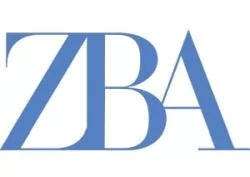SEBI is probably one of the most pro-active regulators in India. It has taken public comments by way of a consultation paper on debenture defaults following defaults of institutions such as Dewan Housing Finance and multiple enforcement issues over the last 2 years. Some interesting statistics are 93% of defaults are on secured issuances and debenture trustees (”DT(s)”) have only completed security enforcement in 10% of cases. In 30% of cases there is no communication from debentureholders (“DHs”) and in 60% cases enforcement proceedings are pending. Issuers' have sold better parts of their receivables portfolios leaving DHs with a worsened overall floating charge receivables portfolio securing their non-convertible debentures (“NCDs”).
Following on from our earlier post in October 2020 on SEBI's conduct requirements for DTs following default in relation to intercreditor arrangements, SEBI has on 3 November 2020 by way of circular “Sub: Creation of Security in issuance of listed debt securities and ‘due diligence' by debenture trustee(s)” increased the verification required at the time of NCD deal closure. DTs are now required to conduct certain independent checks on the assets over which security is to be created.
Key aspects to note are as follows:
- Timing: Due diligence and checks have to be completed before execution of a debenture trustee agreement. This effectively means it has to be completed prior to subscription by investors in any NCD or upload on the electronic book mechanism for investor bidding.
- Application: This applies to
all types of NCD issuances, both private placements and public
issuances;
- Information and Third-Party Searches: Issuers' have to provide asset details on movable or immovable property over which charges are created. This includes original or certified title deeds, title reports, copies of relevant agreements and evidence of registration (as applicable) with Sub-registrar, Registrar of Companies and Central Registry of Securitization Asset Reconstruction and Security Interest. This has to be verified independently by the DT conducting its own investigation.
- Assets without Existing Charge: Issuers' must undertake that assets are free from any existing security;
- Assets with Existing Charge:
An Issuer must provide details of existing charges, charge holders,
secured amounts and evidence of registration with Sub-Registrar,
Registrar of Companies, CERSAI, Information Utility
(“IU”) registered with Insolvency and
Bankruptcy Board of India, as applicable. Either (i) consents from
existing charge holders for further charge creation; or (ii)
documents where existing charge holders have given consent to
create further charges, have to be provided. If there is a negative
restriction not to create security in lender contracts, a consent
from existing unsecured lenders is required. DTs must notify
existing charge holders of the proposal to create further security
by Issuers' seeking their comments/ objections, if any, to be
communicated to DTs within 5 working days.
- Guarantees: An interesting change is that whilst net worth or financial statements were required contractually by DHs as a matter of market practice, due diligence has been extended to also include providing: (i) details of relationship between an Issuer and its guarantor; (ii) net worth statement for a personal guarantor (“PG”) and audited financial statements for a corporate guarantor (“CG”), which must each be not more than 6 months old and certified by the guarantor's chartered accountant; (iii) a list of the CG or PG's assets, and details of those which are secured and unsecured (and any consent from lenders required to give such CG or PG); (iv) conditions for enforcement of a CG or PG including details of put options or any other terms and conditions which may impact the security created; and (v) copies of earlier agreements providing a CG or PG to any other person.
There are additional interesting requirements for CGs, such as: (A) providing details of a corporate group structure; (B) disclosing the impact on any security if, in future, there is a debt restructuring – this is a complex area given RBI regulations and the fact that the impact may depend on who the DHs are. For example, the impact on a foreign portfolio investor may be different to an Indian bank; and (C) ensuring the guarantee is disclosed as “contingent liability” in the “notes to accounts” in financial statements. Whilst this may seem obvious there have been issues around companies not disclosing and also non-disclosure of highly structured put options and indemnity obligations.
- Other forms of security: Share pledges require a depository participant statement confirmation of holding and undertaking to pledge.
Independent verification by DTs: DTs have to be independent in their exercise of due diligence and independently ensure that an Issuers' assets are sufficient to discharge interest and principal amounts on NCDs at all times. Given the nature of changing security value over time, particularly where for example listed shares are pledged, this may place ongoing and costly monitoring requirements on DTs. The consequences of not maintaining the security cover is not specified. However, we assume that DTs would then notify DHs who would determine whether to accelerate the debt. DTs also have to verify the relevant filings made on public websites like Ministry of Corporate Affairs, stock exchanges, CIBIL, IU and certificates from auditors.
- Due Diligence Certificate of
DT: DTs have to issue a ‘due-diligence
certificate' in a format specified confirming the Issuer has
provided adequate security, all consents for security creation have
been obtained, all disclosure has been and all covenants proposed
to be included in a debenture trust deed
(“DTD”) (including any side letter,
accelerated payment clause) are disclosed in disclosure document to
investors.
- Listing: Stock exchanges
will only list NCDs on receipt of a due diligence certificate in
the format specified from DTs which confirms security creation and
execution of a DTD.
- Issuer Compliance: Disclosure documents need to be more transparent and disclose appointment terms of the debenture trustee agreement including fees charged by DTs and their due diligence process.
Conclusion
An Issuer has to create the security in favour of the DT and execute the DTD prior to applying for any listing of NCDs. Stock exchanges will only list the NCDs once the DT has confirmed security creation. Practically for issuances on the electronic book mechanism which are secured, this may require some adept drafting to cater for the electronic book build subscription not meeting the maximum amount proposed but yet security has been created for the maximum since it needed to be created in advance. We believe that the SEBI changes are positive measures for the secured issuance market and will require some operational and compliance changes for both Issuers, DTs and market participants. We expect that DTs will seek the assistance of third-party professionals such as law firms, accountants and registered valuers to assist in in its preparation of reports and certificate. One consequence is that cost of issuance will increase for secured Issuers. These are welcome measures to not only create a robust market but also shows how Indian regulators adapt dynamically.
Originally Published by ZBA, November 2020
The above is a generic analysis and should not be regarded as a substitute for specific advice based on the facts of a client's objectives and specific commercial agreements reached. Please do reach out to us at mail@zba.co.in for any queries.

